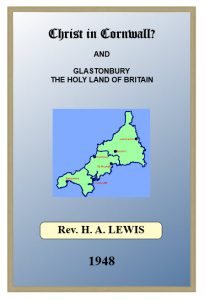A TALENTED AUTHORESS HAS LATELY PUBLISHED A BOOKLET, in which she sets out to disprove most of the holy legends of Glastonbury and Cornwall, and in particular that of the visit of Our Lord to this land. She has entitled it “Glastonbury, Truth and Fiction.” The title alone shows the prejudiced attitude of the writer and her fellow sceptics. Since when has legend or oral tradition become identified with fiction? Or truth confined to facts attested by documents of unimpeachable reliability? The utmost that the writer has proved is that many of these holy legends have not the documentary support which she and her kind require in order that they should be classified as “truth,” or at any rate be removed from the realm of “fiction.” I wonder in which category the writer would place the following, to mention only three generally accepted traditions:
The martyrdom of most of the Apostles. The episcopacy of St. Peter at Rome. The residence of St. John at Ephesus.
If documentary proof is the only requisite of truth, and all legend is fiction, then surely these, too are fiction.
The view taken by the present writer has always been that legends often, perhaps generally, contain a germ of truth, and that the probable degree of truth can be fairly gauged by such considerations as the source of origin; the localities where the legends had vogue; the likelihood or otherwise of the influence of careless legend-mongers; and finally the result of applying to the legends the acid test of history and archaeology.
I claim that the legendary visit of Our Lord to Britain, and to Cornwall in particular, comes through all these tests remarkably unscathed, leaving all reasonable people with the conviction that it may have been, and many of us who have given years of study to the subject, the growing faith that it is probably true.
I shall presently record the various versions of the legend, mostly in the very words in which they were given me by my informants, the majority of whom are simple folk with no pretension to much “book learning.” It will be seen at once that it is almost exclusively associated in Cornwall with the tin trade, in the mining districts and the adjacent ports from which British tin was exported before and during the first century A.D. It is not usually found in parts where monastic influence was most pronounced. Even at Glastonbury the legend perpetuated and embellished by the monks of the middle ages was about Joseph of Arimathea, rather than about Our Lord, as the holy visitor.
